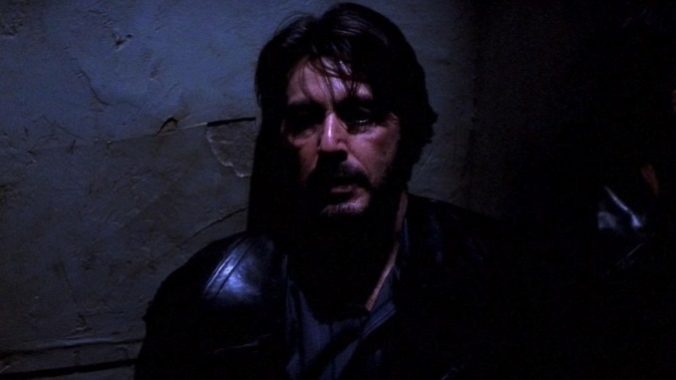You Think You’re Big Time? Carlito’s Way, Still Better Than Scarface at 30

“You think you’re big time? You’re gonna die big time!” That line, as hollered by Al Pacino, was all over the trailers and ads for Carlito’s Way back in 1993, selling it as an intense gangster thriller in the tradition of Pacino’s past forays into a life of crime. In that sense, it’s not misleading: Carlito’s Way contains violent stand-offs and white-knuckle suspense, easily standing with Pacino’s best. What the ads understandably elided, however, was that in the film itself, Pacino booms that line out as a bluff, into something of a void. Carlito calls it out from a bathroom where he worries he may be cornered; he’s hoping to evoke his larger-than-life reputation, and then slams open the bathroom door without coming through it, hoping to draw out any remaining enemies so he can tell what he’s up against. Carlito himself is out of bullets, relying on his bravado (and at least a few dead bodies, courtesy of his crack shooting a few minutes earlier) to save his skin. As it turns out, everyone else is already dead, or nearly there, and Carlito Brigante is able to slip away from the shoot-out with a single flesh wound. He’s not gonna die, big time or small time, at least not yet.
This crucial early-film sequence, which builds to its blazing guns with lurking dread and inimitable style courtesy of director Brian De Palma, also inspired the film’s poster image: Pacino – or PACINO, as the poster text tells us – silhouetted against a wall (a bathroom wall in the actual film, made to look more like an alley on the poster), holding his gun. The real scene has Carlito closer to cowering in the shadows than lurking ominously. Yet the poster-ready image isn’t untrue; Carlito Brigante is a pretty slick badass when he wants to be. De Palma’s movie, however, lets us see the man who doesn’t particularly want to be that guy anymore.
Well before it turned 30, Carlito’s Way was already an anniversary picture: A reunion between Pacino, De Palma, producer Martin Bregman and Universal Pictures, almost exactly a decade after they all worked together on Scarface. (The concept of Pacino doing a Latino accent was allowed to tag along too, apparently.) Scarface’s reputation grew in stature since its respectable, unremarkable box office performance in 1983, as it became a gangster classic, an iconic Pacino vehicle and the inspiration for a number of high-profile rappers. Carlito’s Way is also probably better-regarded now than it was at the time of its original release, but though it did inspire a later direct-to-DVD prequel indicating some youth-market interest, it hasn’t reached Scarface heights of imitation, homage or (despite that great silhouette) dorm-room poster ubiquity. But it’s the better film of the two – maybe even De Palma’s best overall. The director himself seems to think so: “I can’t make a better picture than this,” he recalls thinking to himself while rewatching the movie a few months after it debuted to middling business in the U.S. (See the wonderful documentary De Palma for a candid play-by-play of this and all of his other movies.)
At the time, though, Carlito’s Way was oddly received as an awards-season also-ran, on the heels of Pacino’s recent Oscar win for Scent of a Woman, just about six months earlier. That career context provides – whether intentional or not – De Palma’s smaller-than-usual dose of meta-movie playfulness. Early in the film, Pacino’s Carlito gets a new lease on life when an evidence-tampering technicality springs him from a 30-year prison sentence after only five years. He then insists on addressing the courtroom, talking about how he’s been vindicated by the law, with a hamminess not too far removed from his climactic Scent of a Woman grandstanding. As if to point out the artifice of this performance, the visibly irritated judge tells him to cut it out: “You’re not accepting an award,” he says, though the last time much of the audience had seen Pacino, he was doing just that. Carlito is undeterred and continues his speech.
-

-

-

-

-

-

-

-

-

-

-

-

-

-

-

-

-

-

-

-

-

-

-

-

-

-

-

-

-

-

-

-

-

-

-

-

-

-

-

-








































